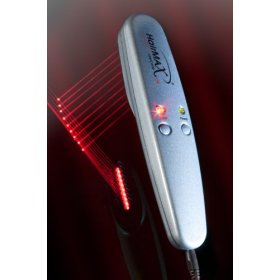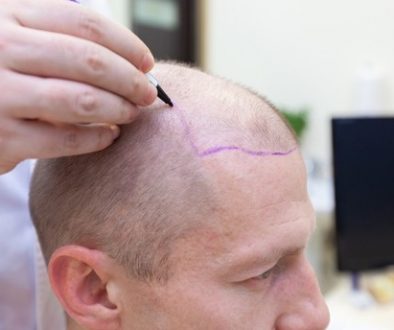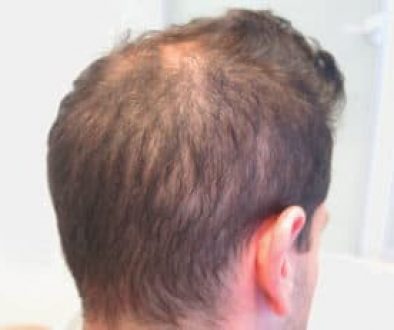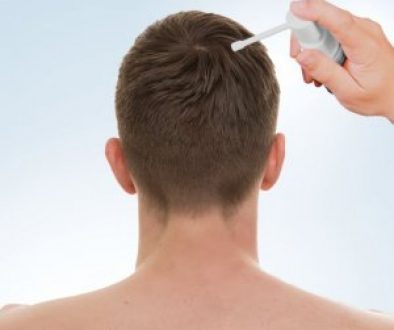Does Laser Therapy Really Work to Fight Hair Loss?
 Based on the recent FDA “approval” of laser hair treatment, specifically the Lexington Hairmax laser comb, there has been a lot of controversy on our hair loss forum regarding its efficacy as a hair loss treatment. Should balding men and women put their faith in the power of lasers to restore their hair? If so, how effective is it as a stand alone treatment? Does it work better when combined with other medical therapies? Did the FDA really approve or endorse it?
Based on the recent FDA “approval” of laser hair treatment, specifically the Lexington Hairmax laser comb, there has been a lot of controversy on our hair loss forum regarding its efficacy as a hair loss treatment. Should balding men and women put their faith in the power of lasers to restore their hair? If so, how effective is it as a stand alone treatment? Does it work better when combined with other medical therapies? Did the FDA really approve or endorse it?
These are important questions men and women of alopecia should be able to answer when considering low level laser therapy. Click here to read other and contribute your thoughts to this important discussion on our hair restoration forum.
Bill Seemiller
Associate Publisher
Technorati Tags: laser hair treatment, Hairmax, laser comb, hair loss treatment, balding, low level laser therapy, hair restoration




July 27, 2009 @ 10:08 am
Bill –
In answer to your questions posted on July 16, we offer the following:
1 – There were no photographs published with the photographs of subjects from the study as the primary measurement of efficacy was hair counts.
2 – This clinical study (as with all bona fide studies) was approved by an independent certified Investigational Review Board which assured proper study design. Also, in order to be conducted as a double-blind study all analyses of hair counts were conducted by an independent third party qualified to conduct these hair counts. This person was blinded as to which subjects’ hairs were being counted so as to eliminate bias in the hair counts and had no knowledge as to which subject received the sham vs. the active devices. Finally, in order to have this paper published as a bona fide study, the article was subjected to exhaustive independent peer review conducted by the journal without any input from Lexington as the sponsor of the study.
In conclusion, it is important to also realize that while Lexington International sponsored the study, the 510(k) clearance to market was based on a thorough review and analysis of the data by the FDA which was key to granting of the clearance to market.
Leonard Stillman
Director of Professional Services
Lexington International, LLC
July 16, 2009 @ 3:02 am
Leonard,
I appreciate you sharing this with our readers, especially since the clinical trials on the efficacy of the HairMax LaserComb was kept from the public for awhile.
Were there any photos that went along with this study? Also, was the study conducted by Lexington International overseen by a third party not interested in its financial success?
I look forward to your response.
Best wishes,
Bill
Associate Publisher of the Hair Transplant Network, the Hair Loss Learning Center, and the Q&A Blog
July 9, 2009 @ 12:27 pm
I am the Director of Professional Services at Lexington International, LLC. Many of you have asked about the clinical study used for the FDA submission. The study was published in May 2009 in the journal Clinical Drug Investigation. This post is not for commercial purposes, simply to announce the publication of the article and to post the Abstract as contained below in PubMed.
1: Clin Drug Investig. 2009;29(5):283-92. doi: 10.2165/00044011-200929050-00001.Links
HairMax LaserComb(R) Laser Phototherapy Device in the Treatment of Male Androgenetic Alopecia: A Randomized, Double-Blind, Sham Device-Controlled, Multicentre Trial.Leavitt M, Charles G, Heyman E, Michaels D.
Private Dermatology Practice, Maitland, Florida, USA.
The use of low levels of visible or near infrared light for reducing pain, inflammation and oedema, promoting healing of wounds, deeper tissue and nerves, and preventing tissue damage has been known for almost 40 years since the invention of lasers. The HairMax LaserComb(R) is a hand-held Class 3R lower level laser therapy device that contains a single laser module that emulates 9 beams at a wavelength of 655 nm (+/-5%). The device uses a technique of parting the user’s hair by combs that are attached to the device. This improves delivery of distributed laser light to the scalp. The combs are designed so that each of the teeth on the combs aligns with a laser beam. By aligning the teeth with the laser beams, the hair can be parted and the laser energy delivered to the scalp of the user without obstruction by the individual hairs on the scalp. The primary aim of the study was to assess the safety and effectiveness of the HairMax LaserComb(R) laser phototherapy device in the promotion of hair growth and in the cessation of hair loss in males diagnosed with androgenetic alopecia (AGA). This double-blind, sham device-controlled, multicentre, 26-week trial randomized male patients with Norwood-Hamilton classes IIa-V AGA to treatment with the HairMax LaserComb(R) or the sham device (2 : 1). The sham device used in the study was identical to the active device except that the laser light was replaced by a non-active incandescent light source. Of the 110 patients who completed the study, subjects in the HairMax LaserComb(R) treatment group exhibited a significantly greater increase in mean terminal hair density than subjects in the sham device group (p < 0.0001). Consistent with this evidence for primary effectiveness, significant improvements in overall hair regrowth were demonstrated in terms of patients’ subjective assessment (p < 0.015) at 26 weeks over baseline. The HairMax LaserComb(R) was well tolerated with no serious adverse events reported and no statistical difference in adverse effects between the study groups. The results of this study suggest that the HairMax LaserComb(R) is an effective, well tolerated and safe laser phototherapy device for the treatment of AGA in males.
PMID: 19366270 [PubMed – in process]
This study will answer questions as to the efficacy of the device.
Leonard Stillman
Director of Professional Services
Lexington International, LLC